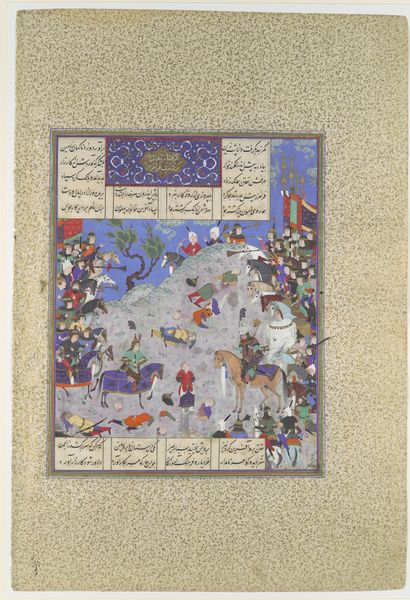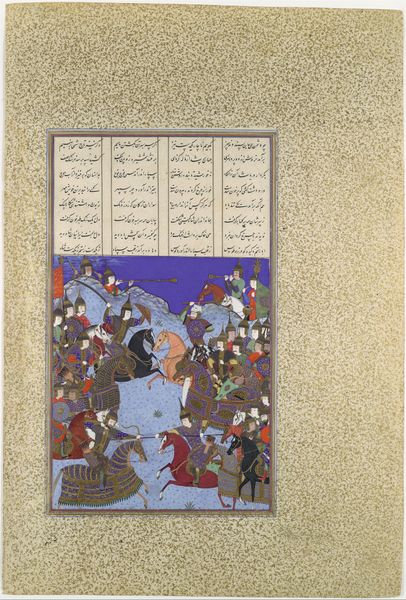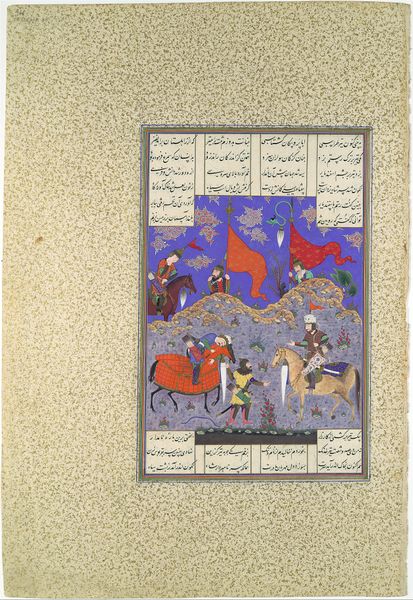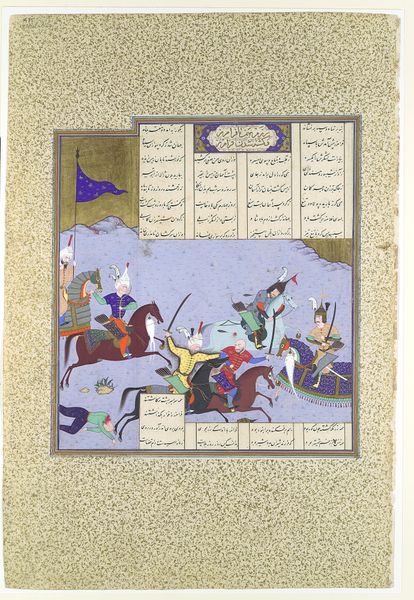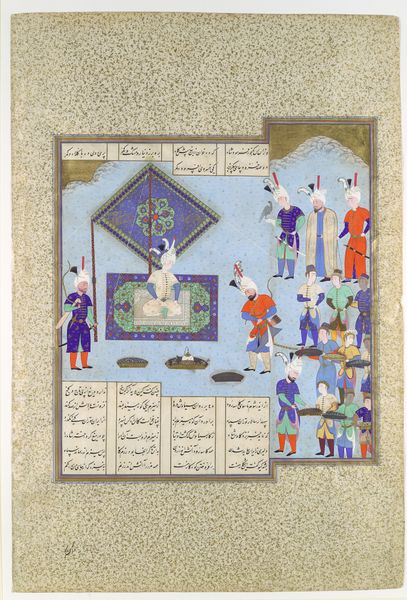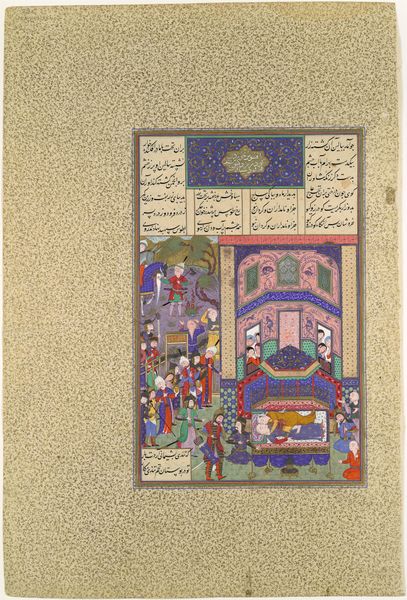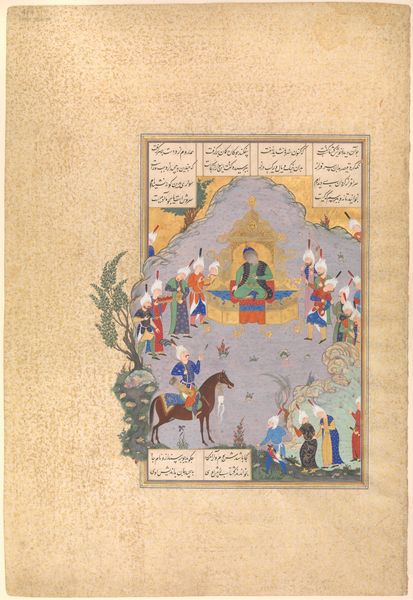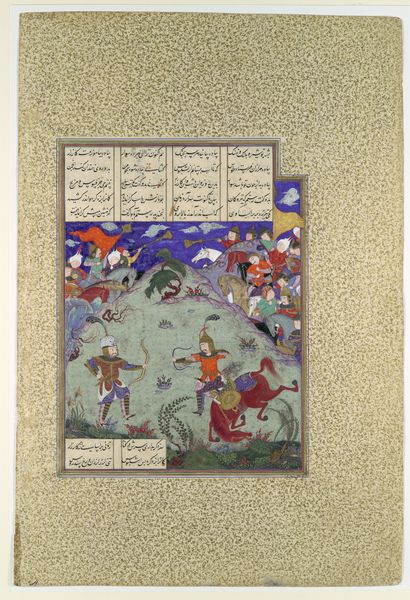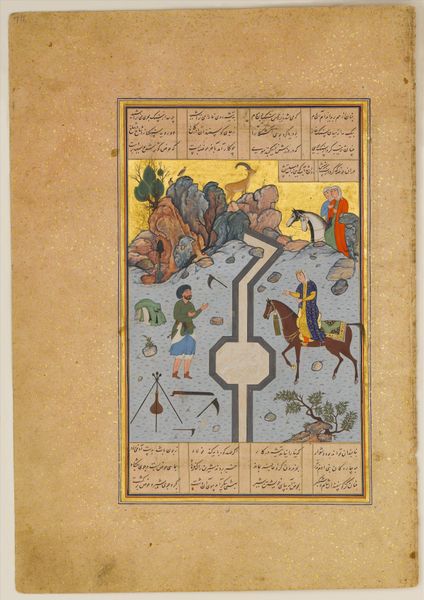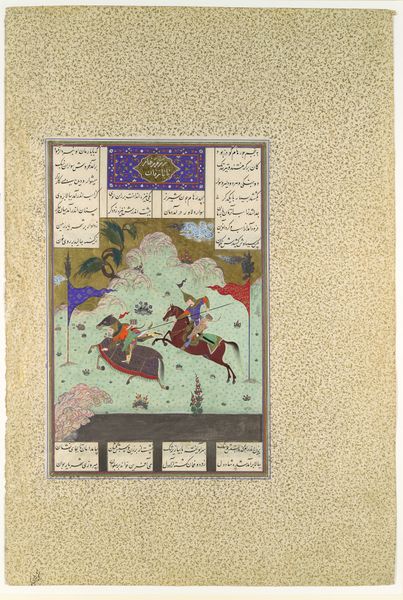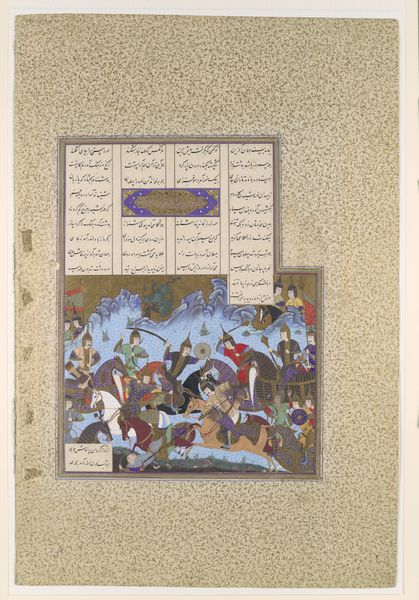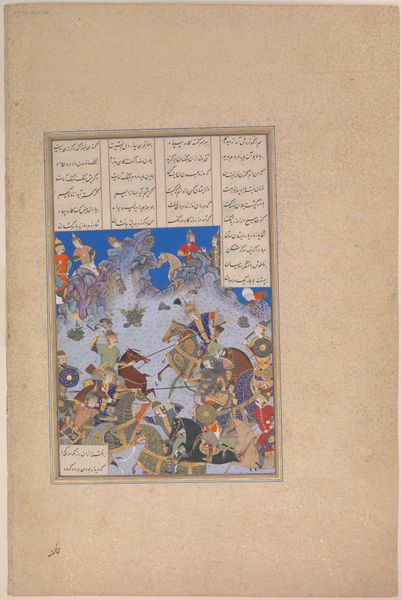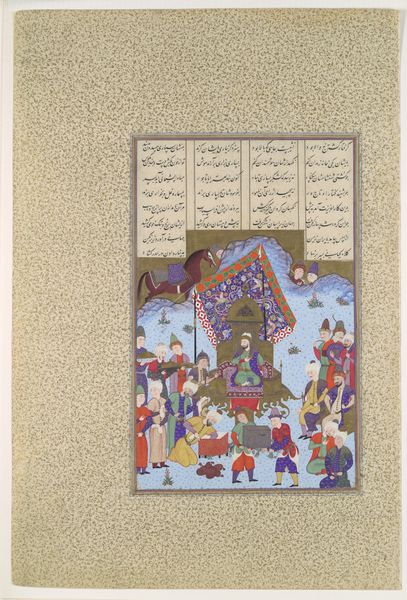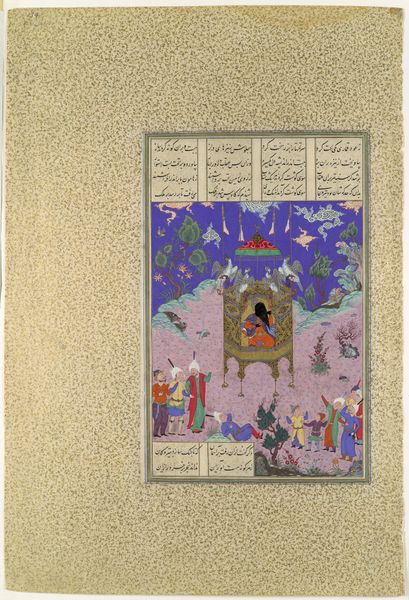
"The Coup against Usurper Shah", Folio 745v from the Shahnama (Book of Kings) of Shah Tahmasp 1505 - 1560
0:00
0:00
#
landscape
#
figuration
#
horse
#
abstraction
#
line
#
islamic-art
#
history-painting
#
miniature
#
watercolor
Dimensions: Painting: H. 7 3/16 in. (18.2 cm) W. 10 7/16 in. (26.5 cm) Entire Page: H. 18 1/2 in. (47 cm) W. 12 1/4 in. (31.1 cm)
Copyright: Public Domain
Editor: Here we have "The Coup against Usurper Shah," a folio from the Shahnama, or Book of Kings, dating between 1505 and 1560. It's currently housed at the Metropolitan Museum of Art. I'm really struck by the energy of the piece. All those horses and figures seem to be tumbling over each other, yet it still feels balanced. What do you see in this piece, focusing on its formal qualities? Curator: Precisely. Observe how the artist utilizes the principle of hierarchy not through size, but through placement and colour. The eye is drawn to the cluster of figures at the painting's heart due to the concentration of bright hues—the reds, blues, and greens. These hues, contrasted against the relative blankness of the background, produce a focal point within the organized chaos. Editor: That makes sense. So the visual rhythm is built through color and form, not just by arranging the figures themselves? Curator: Indeed. Consider how the use of line contributes. The artist’s deliberate use of curved, calligraphic lines—particularly in the rendering of the horses and their movement—contrasts with the angularity of the text panels that border the scene. What does this tension between line types accomplish? Editor: It almost separates the narrative from the action within the image itself. The text provides context, but the scene feels dynamic and self-contained, if that makes sense? Curator: Quite so. It's a masterful balance between narrative and purely visual experience, constructed entirely through careful arrangements of line, colour, and form. The intention here seems to use a more dynamic line to emphasize the dramatic tension. Editor: I hadn't noticed that level of separation before! I was caught up in the chaos, but now I see how each element contributes to a structured whole. Curator: Paying close attention to such interactions enriches how we can examine this.
Comments
No comments
Be the first to comment and join the conversation on the ultimate creative platform.
